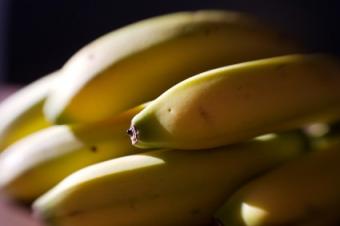
Potassium is a crucial component in our blood stream, and in order to avoid unwanted side-effects, a low potassium diet should be eaten when levels need to be specifically regulated because levels are too high, and a diet rich in potassium should be followed when levels are too low.
What Exactly is Potassium?
Potassium is a mineral found in significant levels in the body's blood stream. This mineral helps regulate levels of the mineral sodium which is significant for controlling hydration of the body. Potassium is crucial to cleansing unwanted toxins from the cells of the body. It is also essential for:
- Maintaining a correct blood pH
- Stimulating the production of insulin
- Maintaining digestive enzyme efficiency
- Ensuring optimal nerve and muscle functions
Nobody can self-test their levels of potassium;it can only be performed by means of a blood test. Potassium imbalance is often discovered when individuals present with non-specific symptoms, possibly related to the above functions or when it is discovered by chance during routine investigation for another problem. For some, a too high or too low potassium level can be a subtle issue requiring very little intervention. However, for others it can cause life threatening problems and requires intravenous treatment to regulate the balance as a matter of urgency.
Low Potassium Diet Versus High Potassium Diet
When a potassium imbalance can be improved upon simply by a change in diet, then it can be assumed the blood potassium level has only slightly deviated from normal.
To improve and increase the level of potassium a suggested group of foods should be followed and the dietary intake of potassium-rich foods increased. Similarly, in a situation whereby potassium is found to be too high the exact same foods will be removed from the diet. In no time at all changes can be made to improve upon the too-high and too-low scenarios.
Foods to Increase or Avoid
Below are some common types of foods that contain potassium. If blood levels are too high and a low potassium diet is required, omit them from the diet, and if a high potassium diet is needed simply increase the intake. The first group is vegetables:
- Asparagus
- Avocado
- Broccoli
- Brussels sprouts
- Cauliflower
- Celery
- Mushrooms
- Spinach
- Sweet potatoes
The second group is fruits:
- Bananas
- Cantaloupe melon
- Dried apricots
- Grapefruit
- Kiwifruit
- Oranges
- Strawberries
And thirdly non-specific foods which have been identified as rich in potassium:
- Halibut
- Cod
- Pinto beans
- Soy beans
- Kidney beans
- Natural yogurt
As you will note, the majority of potassium rich foods are fruit and vegetables, however, the list is relatively explicit thus providing a relatively detailed guide for those wishing to increase or decrease their input. Along with potassium, fruit and vegetables contain several other vitamins and minerals essential to the body's functions. Just as with potassium, these too can cause problems if taken in too high or too low quantities. An example of these would be:
- Iron
- Zinc
- Sodium
- Magnesium
A Note of caution
It is important to be aware that some foods are hidden in recipes and even more importantly juices made from either the fruits or vegetables listed above are equally likely to have the potassium content. Secondly, ensure that when increasing or decreasing potassium in the diet you do not go overboard and even more importantly, from a safety perspective. it is essential to have blood potassium levels checked at regular intervals to ensure that all the hard efforts are paying off..







